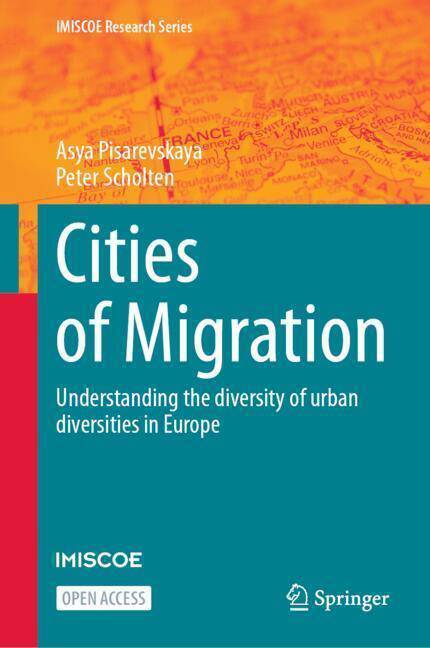
- Afhalen na 1 uur in een winkel met voorraad
- Gratis thuislevering in België vanaf € 30
- Ruim aanbod met 7 miljoen producten
- Afhalen na 1 uur in een winkel met voorraad
- Gratis thuislevering in België vanaf € 30
- Ruim aanbod met 7 miljoen producten
Cities of Migration
Understanding the Diversity of Urban Diversities in Europe
Asya Pisarevskaya, Peter ScholtenOmschrijving
This open access book develops a typology of cities by exploring how current levels of migration-related diversity and segregation relate to three groups of factors: international mobilities, inequalities and political-institutional aspects of local governance. Based on both quantitative and qualitative data from 16 cities in four European countries (France, Germany, The Netherlands, and Italy), the book compares the cities and uses a method of fuzzy-set Qualitative Comparative Analysis. It demonstrates the shared contingencies of factors among the cities within each type and the crucial differences between the types of localities, and offers a more differentiated, holistic understanding of migration-related diversity configurations through the five conceptualised types: (1) Superdiverse cities, (2) Postindustrial diverse cities. (3) Middle class diverse cities, (4) Divided cities, and (5) Marginal migration cities. As such, the book is a valuable read to all those who would like to learn more about urban migration-related diversity and how it is formed and governed.
Specificaties
Betrokkenen
- Auteur(s):
- Uitgeverij:
Inhoud
- Aantal bladzijden:
- 216
- Taal:
- Engels
- Reeks:
Eigenschappen
- Productcode (EAN):
- 9783031722103
- Verschijningsdatum:
- 19/10/2024
- Uitvoering:
- Hardcover
- Formaat:
- Genaaid
- Afmetingen:
- 156 mm x 234 mm
- Gewicht:
- 498 g

Alleen bij Standaard Boekhandel
Beoordelingen
We publiceren alleen reviews die voldoen aan de voorwaarden voor reviews. Bekijk onze voorwaarden voor reviews.











